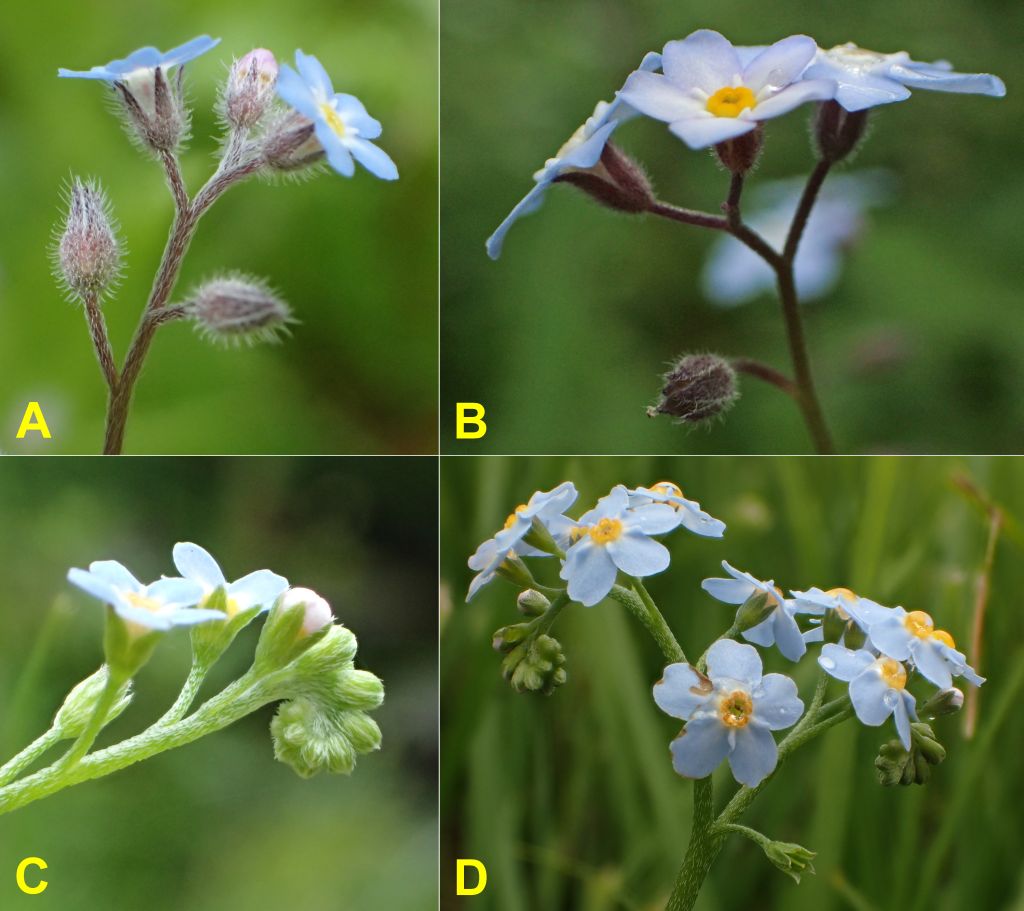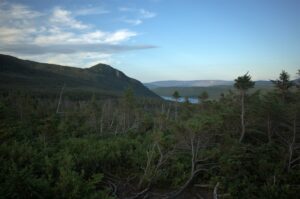By Andus Voitk
Posted March 26, 2018
A few years ago John Maunder sent around a note with references, suggesting that most likely Myosotis arvensis was the species of forget-me-not that flowered in Somme during WWI and, therefore, became the floral symbol of the Newfoundland Regiment (Hill 1917). That note piqued my interest in the genus. It took me a few years to find and identify all four of our species: M. arvensis, M. laxa, M. scorpioides and M. sylvatica. The photographs come from an attempt to master a small point and shoot camera; although of limited quality, most demonstrate the pertinent distinguishing features adequately (Figure 1). This short review is dedicated to John with thanks for his untiring efforts to enlighten us, and at the same written for my grandson, Eemil, with whom I have spent part of two summers looking at these small blue beauties. Of the four species, only M. laxa is native; the other three have been introduced to the province, likely as garden escapees.

Needless to say, the four species are similar in many regards. As with most species in this family, flowers are usually pink in bud, but blue at maturity, although the pink may persist, and white forms occur.
Four characters seemed to separate our four species: flowering time, calyceal hairiness, flower size, and habitat (Table 1). Two early bloomers, one big and one small, both with projecting calyceal hairs, grew on dryer ground, usually disturbed by human activity, while the two later bloomers, one big and one small, both with flat hairs on the calyx, grew in wet, natural environs like ditches or stream banks. Both species within each of these two habitats differed by the preference for rather poor, sandy-gravelly soil for species with small blossoms, and richer soil with more loam for the two with large blossoms.
Table 1: Distinguishing characteristics for forget-me-nots of Insular Newfoundland.
| Characteristic | M. laxa | M. scorpioides | M. arvensis | M. sylvatica |
| Habitat | natural wet areas, ditches, river banks, poor soil | natural wet areas, ditches, river banks, rich soil | drier grassland, anthropogenic, ruderal, poor soil | drier grassland, anthropogenic, gardens, rich soil |
| Flower Diameter | 2-5 mm | 6-10 mm | 5-8 mm | 6–10 mm |
| Hairs | denser, flat, forward-pointing | sparser, flat,
forward-pointing | stout, dense, outward-pointing, most hooked | thin, sparser, outward-pointing, some hooked |
| First Flower | July | July | June | May |
Hair character or density, stem length, basal leaf stem length or arrangement pattern, and calyceal stem length did not seem as helpful as some guides suggest. Even rooting at nodes, which should be obvious, was not always useful. All have a somewhat scrolled inflorescence, so that differentiation on the basis of this character is an art of interpreting relative degree. That said, the scroll was most obvious for M. laxa and M. scorpioides, less obvious for M. sylvatica, and least for M. arvensis.
These are personal observations and few measurements made around our home over three and one-half seasons. Longer observation over a greater area and time may produce different measurements. It may also show some of my useful differentiating characters less helpful, and some that I found ambiguous to be more helpful. No doubt regional variation, presence of garden escapee cultivars, potential genetic mixing and personal experience will influence selection of reliable characters for identification. See what works for you in your own explorations!
References
Hill Sir AW. 1917. Flora of the Somme battlefield. Bulletin of the Royal Botanic Garden, Kew. 9-10:297–300.

